The Primary Manuscript of the Poetic Edda
Finnur Jónsson's facsimile edition, 1891
HOME
Codex Regius [R] or Konungsbók, The King's Book [K]
| Click on Image to View Manuscript Page | ||||||||
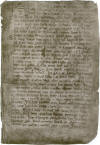 1 Völuspá 1-15 |
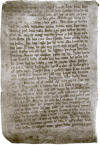 2 Völuspá 15-31 |
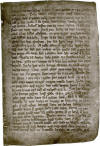 3 Völuspá 31-45 |
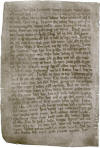 4 Völuspá 45-61 |
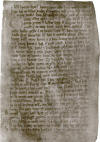 5 Völuspá 61- Hávamál 15 |
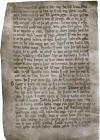 6 Hávamál 15-31 |
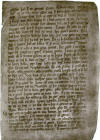 7 Hávamál 31-50 |
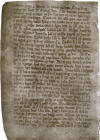 8 Hávamál 50-69 |
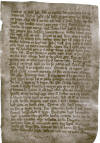 9 Hávamál 69-88 |
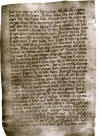 10 Hávamál 88-104 |
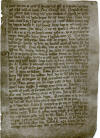 11 Hávamál 104-123 |
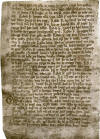 12 Hávamál 124-141 |
 13 Hávamál 142-161 |
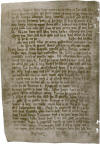 14 Hávamál 161- Vafþrúðnismál 14 |
 15 Vafþrúðnismál 15-37 |
 16 Vafþrúðnismál 38-Grímnismál Prose Intro |
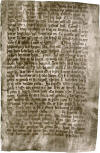 17 Grímnismál Prose Intro- v.4 |
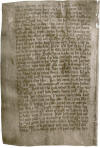 18 Grímnismál 4-24 |
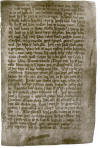 19 Grímnismál 24-37 |
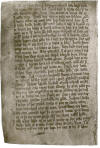 20 Grímnismál 37-53 |
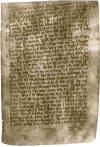 21 Grímnismál 53 -Skírnismál Prose after v. 10 |
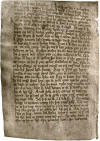 22 Skírnismál after v. 10 -v. 28 |
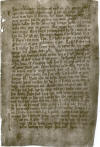 23 Skírnismál 28- Harbarðsljóð 1 |
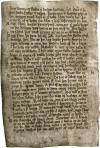 24 Harbarðsljóð 1-18 |
 25 Harbarðsljóð 18-40 |
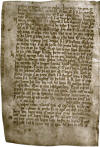 26 Harbarðsljóð 40- Hymiskviða 3 |
 27 Hymiskviða 3-21 |
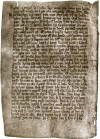 28 Hymiskviða 22-38 |
 29 Hymiskviða 38- Lokasenna 10 |
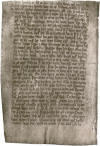 30 Lokasenna 10-27 |
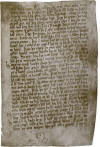 31 Lokasenna 27-45 |
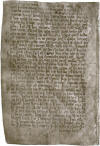 32 Lokasenna 45-62 |
 33 Lokasenna 63 Þrymskviða 12 |
 34 Þrymskviða 13-31 |
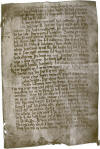 35 Þrymskviða 31- Völundarkviða 7 |
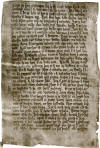 36 Völundarkviða 7-22 |
 37 Völundarkviða 22-37 |
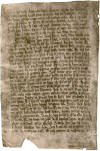 38 Völundarkviða 38 -Alvísmál 18 |
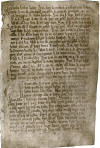 39 Alvísmál 18- Helgakviða Hundingsbana I, 7 |
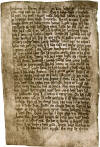 40 Helgakviða Hundingsbana I, 7-24 |
 41 Helgakviða Hundingsbana I, 24-41 |
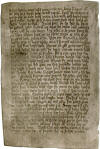 42 Helgakviða Hundingsbana I 41-55 |
 43 Helgakviða Hundingsbana I, 55-Helgakviða Hjörvardsson Prose after v. 5 |
 44 Helgakviða Hjörvardsson Prose after v. 5 - v. 15 |
 45 Helgakviða Hjörvardsson 15-30 |
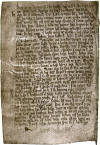 46 Helgakviða Hjörvardsson 30-38 |
 47 Helgakviða Hjörvardsson 38-Helgakviðaa Hundingsbana II, 4 |
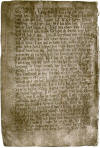 48 Helgakviða Hundingsbana II, 4-14 |
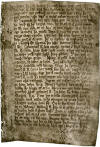 49 Helgakviða Hundingsbana II v. 14- Prose after v. 18- Prose after v. 24- v. 29 |
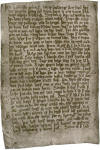 50 Helgakviða Hundingsbana II, v. 19-24, Prose after v. 29- v. 36 |
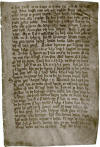 51 Helgakviða Hundingsbana II, 36- Prose after v. 46 |
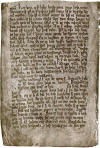 52 Helgakviða Hundingsbana II, Prose after v. 46- Frá Dauð Sinfjötla |
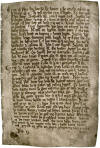 53 Frá Dauð Sinfjötla- Grípisspá 7 |
 54 Grípisspá 8-23 |
 55 Grípisspá 23-39 |
 56 Grípisspá 39- Reginsmál Prose Intro |
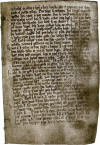 57 Reginsmál Prose Intro- v. 9 |
 58 Reginsmál 9-18 |
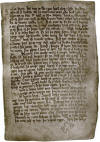 59 Reginsmál 18- Fafnismál 5 |
 60 Fafnismál 5- Prose after 22 |
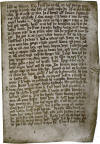 61 Fafnismál Prose after 22- -v. 36 |
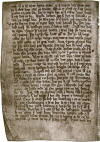 62 Fafnismál 36- Sigrdrifumál 1 |
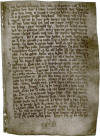 63 Sigrdrifumál 1-13 |
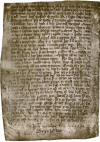 64 Sigrdrifumál 13-29 (* Lacuna of perhaps 15 pages missing here)) |
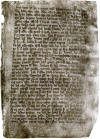 65 65 Brot af Sigurdarkviðu 1-19 |
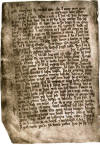 66 Brot af Sigurdarkviðu 19- Gudrúnarkvida I, 12 |
 67 Gudrúnarkvida I, 12- Prose Conclusion |
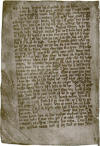 68 Gudrúnarkvida Prose Conclusion- Sigurdarkviða III, 17 |
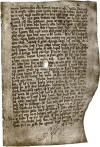 69 Sigurdarkviða III, 17, 35-39 |
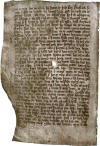 70 Sigurdarkviða III, v. 39, 36-38, 40-55 |
 71 Sigurdarkviða III, 55- Helreið Brynhildar 1 |
 72 Helreið Brynhildar 2- Drap Niflunga |
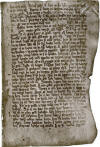 73 Drap Niflunga- Gudrúnarkvida II, 16 |
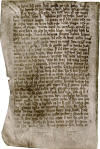 74 Gudrúnarkvida II, 16-31 |
 75 Gudrúnarkvidaa II, 31-- Gudrúnarkvida III, 55 |
 76 Gudrúnarkvida III, 5- Oddrungratr 10, 13-14 |
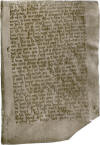 77 Oddrúnargrátr 14-15, 16/5-8, 11-12, 17-20, 16/1-4, 21-31 |
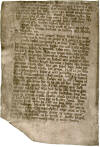 78 Oddrúnargrátr 31- Atlakviða v. 9 |
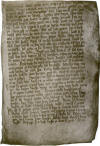 79 Atlakviða 10-25 |
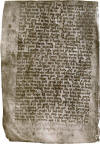 80 Atlakviða 25-40 |
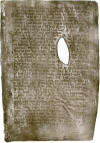 81 Atlakviða 40- Atlamál 12 |
 82 Atlamál 12-32 |
 83 Atlamál 32-51 |
 84 Atlamál 51-68 |
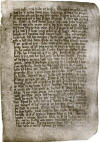 85 Atlamál 68-85 |
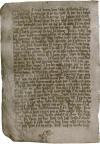 86 Atlamál 85-75 |
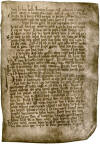 87 Atlamál 75- Guðrunarhvöt 8 |
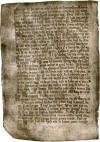 88 Guðrunarhvöt 8 -Hamdismál 14 |
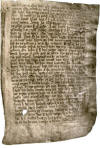 89 Hamdismál 5-21 |
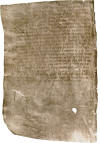 90 Hamdismál 21-Prose Conclusion |
|
The Discovery of the Poetic Edda:
How the Codex Regius Manuscript came to be called the Elder or Poetic Edda Gammel kongelig samling 2365 4to in the Árni Magnússon Institute |
||||||||
From “Eddic Poetry” by Terry Gunnell in
A Companion to
Old-Icelandic Literature and Culture, Edited by Rory McTurk, (2005
"It must always be remembered that when scholars refer to eddic poetry, or the Poetic Edda, they usually mean the contents of a single, fairly insignificant-looking, medieval manuscript known as the Codex Regius of the Elder Edda, rather than a genre defined on the basis of a particular school of authorship or literary style. The manuscript in question, written c.1270, contains a body of 29 poetic works in Old Norse-Icelandic, 10 of them dealing with mythological material, and 19 with Scandinavian and Germanic heroes of ancient times. …Indeed, several features indicate that the Codex Regius is first and foremost a thematic collection of material from differing backgrounds, similar to other well-known medieval manuscripts, such as the German Carmina Burana (which includes, among other things, both drinking songs and a liturgical drama) and the Icelandic personal collection known as Hauksbók.
"For logical reasons, the Codex Regius (Gammel kongelig samling 2365 4to) is today regarded as one of the national treasures of Iceland. Significantly, it was one of the first two manuscripts to be returned to Iceland from Denmark in 1971. Its central importance is that it contains a (slightly rusty) key to the pagan religious world not only of the settlers of Iceland, but also of the people of Scandinavia as a whole, displaying the kind of raw poetic material that Snorri Sturluson utilized when assembling his prose Edda c.1220, and of which Saxo Grammaticus was clearly aware when writing his Gesta Danorum c.1200. It must never be forgotten, however, that the manuscript in question was written nearly 300 years after the official acceptance of Christianity in Iceland (in 999/750). The manuscript's contents may well have ancient, pagan roots, but researchers seeking to make use of this material should remember that it is likely to have existed in oral tradition long before it came to be recorded; and that while it now exists in textual form, it was originally meant to be received orally and visually in performance rather than read privately. ... To judge from the small size of these manuscripts and the economical use they make of space, neither was judged by the people of the time as being as important as, for example, the Möðruvallabók and Flateyjarbók manuscripts of the sagas, or the Stjórn manuscript of part of the Bible."
Einar G. Petursson, Medieval Scandinavia, (1988):
"Codex Regius of the Poetic Edda is an Icelandic manuscript of ninety small quarto pages, but the fifth gathering, probably 16 pages, is now lost. The manuscript was written by one hand not known elsewhere, and is dated palaeographically to about 1270-1280. Codex Regius is the most important manuscript of eddic poetry. It now contains 29 poems in systemic order; the first 10 lays are about the ancient Norse gods, but the remaining part is about ancient heroes. Codex Regius is a copy of an older manuscript now lost. The fragmentary AM 748 I 4to contains, in no particular order, seven eddic lays, and one of them, Baldrs draumr, is not preserved elsewhere. This manuscript is dated to about 1300 or a little later. The textual relationship between the two manuscripts points to a common written original. In the 1220s, Snorri Sturlusson wrote a textbook on poetry, called Snorra Edda or the Prose Edda. It is almost certain that he used the text of the mythical poems Vafþrúðnismál and Grímnismál from the common written source underlying the Poetic Edda.
"...It is not known whether Codex Regius had a name originally. In 1623, Jón Guðmundsson lærði ('the learned') mentioned for the first time an Edda Sæmundr Sigfússon fróði ('the wise'; 1056-1133), older than Snorra Edda. In 1643, when Bishop Brynjólfur Sveinsson in Skáholt obtained Codex Regius (we do not know from where), he believed it was the Edda by Sæmundar, although it is now thought that Sæmundar played no role in collecting or writing Codex Regius. A name and note in the manuscript indicate that it had been in Skagafjörður (in the north) or on the Reykjanes peninsula (southwest) during the previous years.
The last poem before the lacuna is Sigrdrifumál, with the last part of it missing. This poem is preserved complete in paper copies from the 17th century. The lay is found in Völsungasaga as well, but in 1641 Brynjólfur Sveinsson received the only parchment manuscript of this saga, and at least two commentaries on Sigurdrifumál were written for him. It seems certian that there is a direct connection between the copying of the complete text of Sigrdrifumál and the activities in connection with Völsungasaga after 1641. The lacuna in Codex Regius accordingly occurred after 1641, but before 1643. Brynjólfur Sveinsson presented the manuscript to the King of Denmark in 1662, hence the name Codex Regius ('King's Book'). In the Royal Library, it was given number GkS 2365 4to. It was brought back to Iceland on April 21, 1971, and is now in the Árni Magnússon Institute in Iceland."
Gudbrand Vigfússon, Corpus Poeticum Boreale, 1883:
"Chief of all Icelandic manuscripts, the treasure of the Royal Library at Copenhagen is Codex Regius (R), no. 2365, the history of whose appearance in the learned world we have already spoken of; a narrow octavo, now in an 18th century binding, with the royal arms of Christian VII (c. 1780). What its former binding in Bishop's Brynjólf's days was, is not known; the second binder did the vellum some harm by plowing its edges. We should have liked to have had its original cover, but that was probably lost before the worthy, but misguided, librarian ordered it a new coat. It consists of five complete sheets and one final sheet, from which three blank leaves have been cut; but between the fourth and the fifth sheets a sheet at least is missing (the sheet of the Lacuna). This Lacuna existed when Bishop Byrnjólf got the manuscript for he has noted at the top of the fifth sheet, 'λόγος άκεΦαλος' ['A speech or tale without beginning']. But for this the manuscript is perfect. The first page, dark and grimy, is yet perfectly preserved, signed by the good Bishop's monogram. There is no superscription (Edda or otherwise) in the old hand." [etc.]